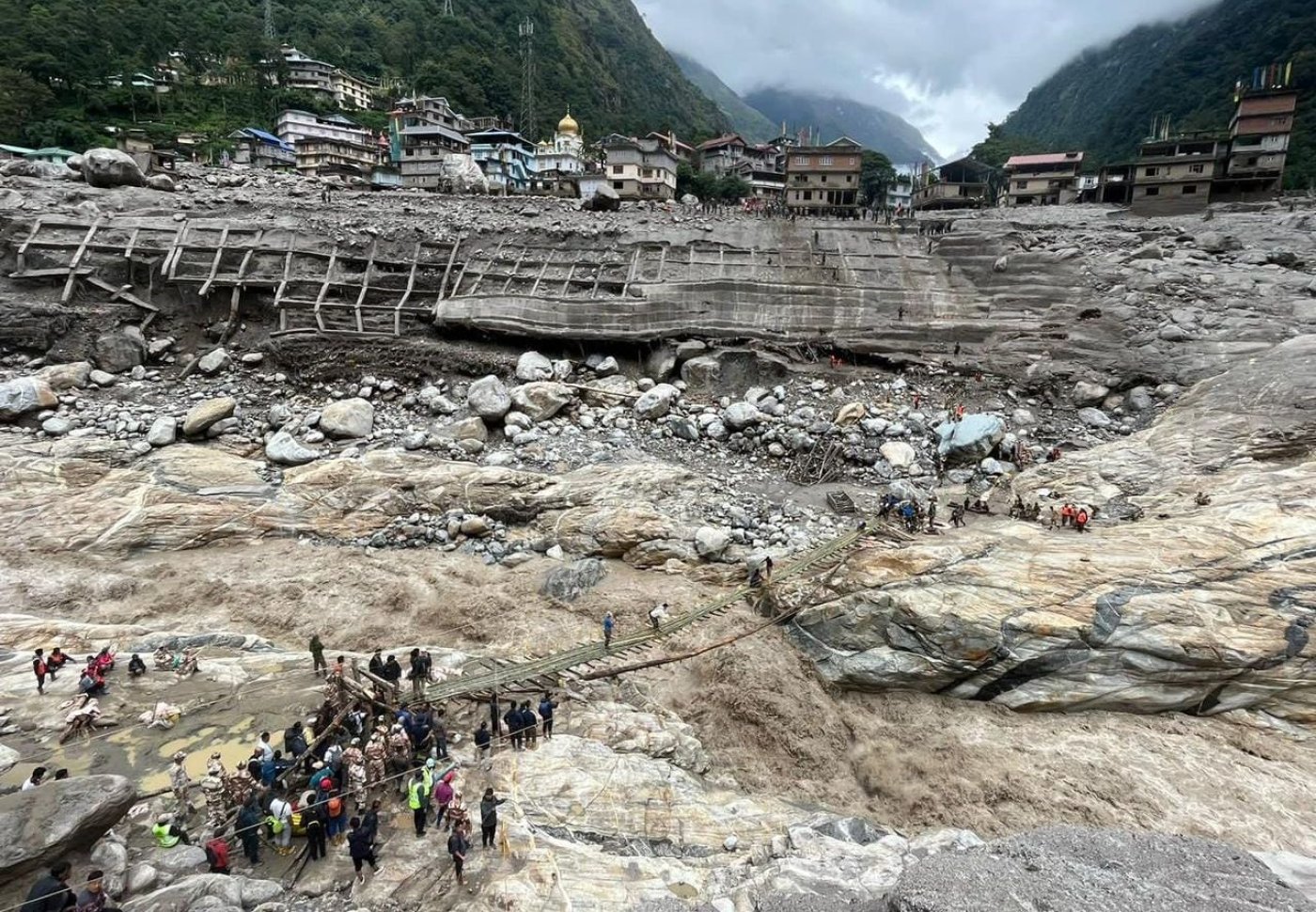
Monsoon was intense even in Claude White’s ‘Sikhim’“...
Editorial, EOI, 16 June 2024 : in the deep cut valleys of the River Teesta in Sikhim, ... The outer hills are lower, the monsoon current penetrates much further north, through the deep valleys which run nearly to the foot of the highest mountains, and consequently the wet zone extends as far as the snow. ... Sikhim, owing to its proximity to the Kangchenjunga, to the fact that it lies in the direct path of the monsoon, and to the directions of its valleys, is much the wettest portion of the whole area, and has a heavy annual rainfall, about 50 inches even in the dry upper valleys of Lachung and Lachen, increasing to about 140 inches in other districts.”
That’s how J. Claude White, the first British political officer in Sikkim, had described the pattern of the then Himalayan kingdom, in his outstanding book ‘Sikhim and Bhutan.’ The same factors are still very much at play in moulding the weather pattern of Sikkim and have been added by new weather phenomena like global warming and El-Nino which is a complex weather pattern.
These appear to have increased the intensity of rainfall in Sikkim and added to the possibility of floods. This year, for instance, monsoon seems to have set in early and is too intense; could be an effect of El-Nino. This has resulted in torrential rains in the upper reaches of river Teesta, in north Sikkim, from June 12; causing a devastating flood in Lachung and further downstream.
Last year in October, Sikkim witnessed unprecedented devastation in the wake of the glacial lake outburst flood. In this case, possibly global warming was the villain. Because of the melting of the glaciers, the South Lhonak Lake in Lachen had already been full to the brim when there was heavy rain in that fateful October night and the lake burst open; causing a devastating flood downstream, all the way to the Jalpaiguri district of West Bengal.
Sikkim is thus at a natural disadvantage so far as floods are concerned. Added to this is the problem of steep slopes of the hills.
During heavy rains, the water penetrates the hill slopes and makes the surface weak, causing landslides. This is one problem that engineers will have to grapple with, maybe for many years to come till technology develops sufficiently to give stability to roads in such an unstable terrain. The only practicable solution on offer for now seems to be to have as many alternative routes as possible connecting Sikkim with the plains of north Bengal; so that if one is blocked by landslides the other can be used.
As the GLOF of October last has underscored, building too many dams on river Teesta to set up hydro power plants should best be avoided. The GLOF had a disastrous impact as the hydro power dam at Chungthang had collapsed, unable to stand the mounting pressure of water; causing a sudden rush of a huge volume of water downstream. The dams must be managed well, the water level monitored and the release of water from the dams calibrated.

0 Response to "Monsoon was intense even in Claude White’s ‘Sikhim’“..."
Post a Comment
Disclaimer Note:
The views expressed in the articles published here are solely those of the author and do not necessarily reflect the official policy, position, or perspective of Kalimpong News or KalimNews. Kalimpong News and KalimNews disclaim all liability for the published or posted articles, news, and information and assume no responsibility for the accuracy or validity of the content.
Kalimpong News is a non-profit online news platform managed by KalimNews and operated under the Kalimpong Press Club.
Comment Policy:
We encourage respectful and constructive discussions. Please ensure decency while commenting and register with your email ID to participate.
Note: only a member of this blog may post a comment.